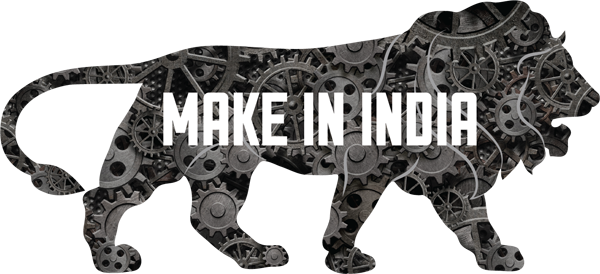An emerging market like India needs to strategise business-friendly policy initiatives and campaigns. The Indian youth from all sections of the society dreams of living in a country that is progressive in all fields, and developed at par with international standards. For any nation to make valuable economic strides on a global scale, its government has to set definite and realistic goals that are achievable through systematic planning and execution.
Last year, Prime Minister Narendra Modi took over the reins of India, and embarked on a journey of inclusive development, wherein every Indian citizen would be able to realise his or her hopes and aspirations. However, the government has various economic and social challenges to tackle in a country which is soaring with aspirations and expectations. To set the ball rolling, the government has introduced various initiatives and policy campaigns, most of which are highly appreciated by the industry and also the general public.
Out of the many initiatives put forth, the one that stands out promisingly is the ‘Make in India’ campaign launched in September 2014. The primary aim of ‘Make in India’ is to turn India into a manufacturing powerhouse by inviting global manufacturers to invest in India and increase the country’s Gross Domestic Product (GDP).
In order to fulfil its aim to fast track the economy and accomplish maximum growth, through ‘Make in India’, the government aims to eliminate unnecessary regulations, shorten bureaucratic processes, upgrade infrastructure, open up sectors to foreign direct investment (FDI), and most importantly, wants to be seen as a true business partner. These steps could actually fulfil the ‘ease-of-doing’ business philosophy and help solve the problems of the leather industry.
Over 25 sectors have been identified to be a part of the ‘Make in India’ campaign. The leather industry also finds itself listed among these sectors that are imperative to spruce up India’s GDP growth. One of the primary targets set under this initiative is to enhance the turnover of this industry from the current $12 billion (nearly Rs 79,392 crore) to $27 billion (Rs 1.78 lakh crore) by 2020. If this works, it will provide employment for an estimated six million people.
India is the second largest producer of leather footwear and garments in the world. It makes for 10% of the world’s leather production and close to 80% of the business of this industry comes from SMEs, which are an important segment of this sector. Manufacturing is a core function of the Indian leather industry, which stands strong at $11 billion (nearly Rs 72,776 crore) and has a significant share in the overall exports of the country. Indian leather goods’ exports are projected to grow 24% per annum over the next five years.
Moreover, leather and leather product manufacturing is a labour intensive industry. The footwear sector predominantly employs women and has the potential for considerable expansion. If ‘Make in India’ is successfully implemented, it will empower women from economically backward sections of the society.
With 55% of the employees below 35 years of age, we employ almost 2.5 million people in the country. Fuelling up manufacturing will lead to a rise in demand for more skilled hands on the deck. Thus, the leather sector could be one of the many industries that can help solve India’s unemployment woes. Though in general, things look good for the industry, there are a number of challenges that still need to be tackled.
For ‘Make in India’ to be successfully executed in the leather industry, the first thing that needs to be done is to address the numerous challenges faced by leather companies and businesses.
Tanning is a basic operation of the leather sector, however, it faces problems such as increased cost of production per unit area of finished leather due to low quality of technology in small tanneries, no specific dedicated industrial areas for leather sector in states like Tamil Nadu, which accounts for about 40% of India’s exports and has about 60% of tanning capacity. Poor capacity utilisation in most tanneries leading to higher financial cost and overheads. It is pertinent that the government is able to solve this logjam through its insightful campaign.
Other roadblocks that particularly curtail the potential of the leather footwear sector include varying levels of technology in the factories and low quality of shoes, which leaves us under the threat of shift in production to other areas or countries where wages are low and yet, the quality is maintained at the same level.
Most Indian companies work on subcontract basis – design, component selection and methods of production are given by the buyers and do not provide their own fashion collections. This problem particularly exists for women’s footwear, which comprises 63% of total footwear market in the world. However, the share of women’s footwear exports out of India’s total footwear exports is only 34%. Though companies are able to make prototypes based on ideas provided by the buyer, employing in-house skilled designers will change the game for the leather products portfolio of the country. Besides designers, there is a major man power requirement in the manufacturing sector, thus leaving a lot of scope for employment for India’s 10 million youngsters, who graduate every year.
As per a report by the National Skill Development Corporation (NSDC), although India has gradually liberalized its cumbersome compliance and documentation policies for global leather trade, it still lags behind most of the developed countries and even similarly placed developing countries. India’s cost of logistics, as a share of the GDP, is one of the highest in the world (12-13% of the GDP) compared to the developed markets (below 10% of the GDP). This is reflected in the transportation cost per kilometre, which may hamper the industry’s competitiveness as the leather is export-based and has to reach a wide retail market. The slow pace of reforms in the Indian power sector has had a specific detrimental effect on the leather industry in the form of additional cost of power back-up.
‘Make in India’ is not exactly a ‘magic solution’ but an encouraging platform for businesses to thrive, especially in tough economic times. There is no doubt that if the campaign is implemented well, it has the potential to bring in a manufacturing revolution, which the leather industry needs urgently.





